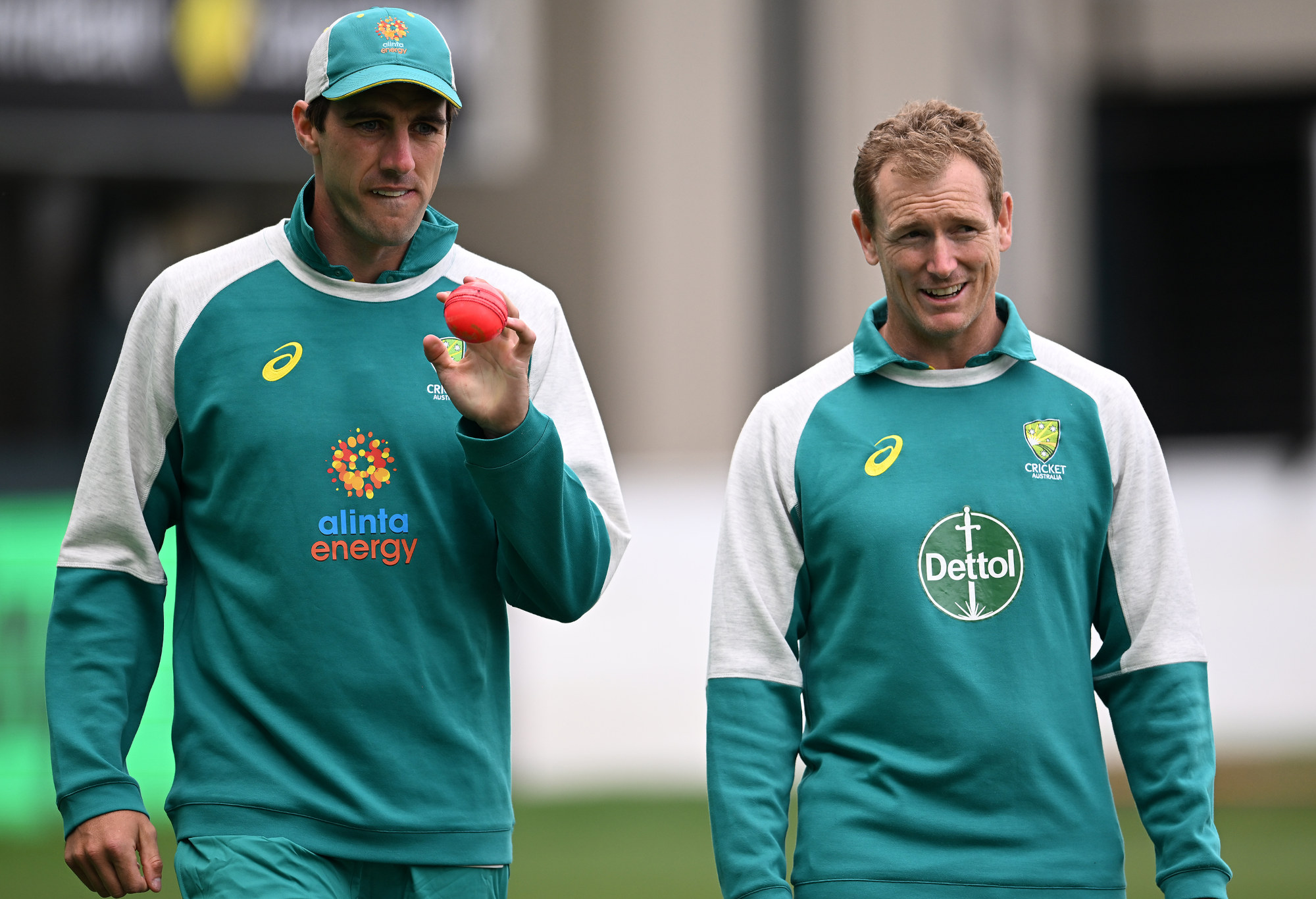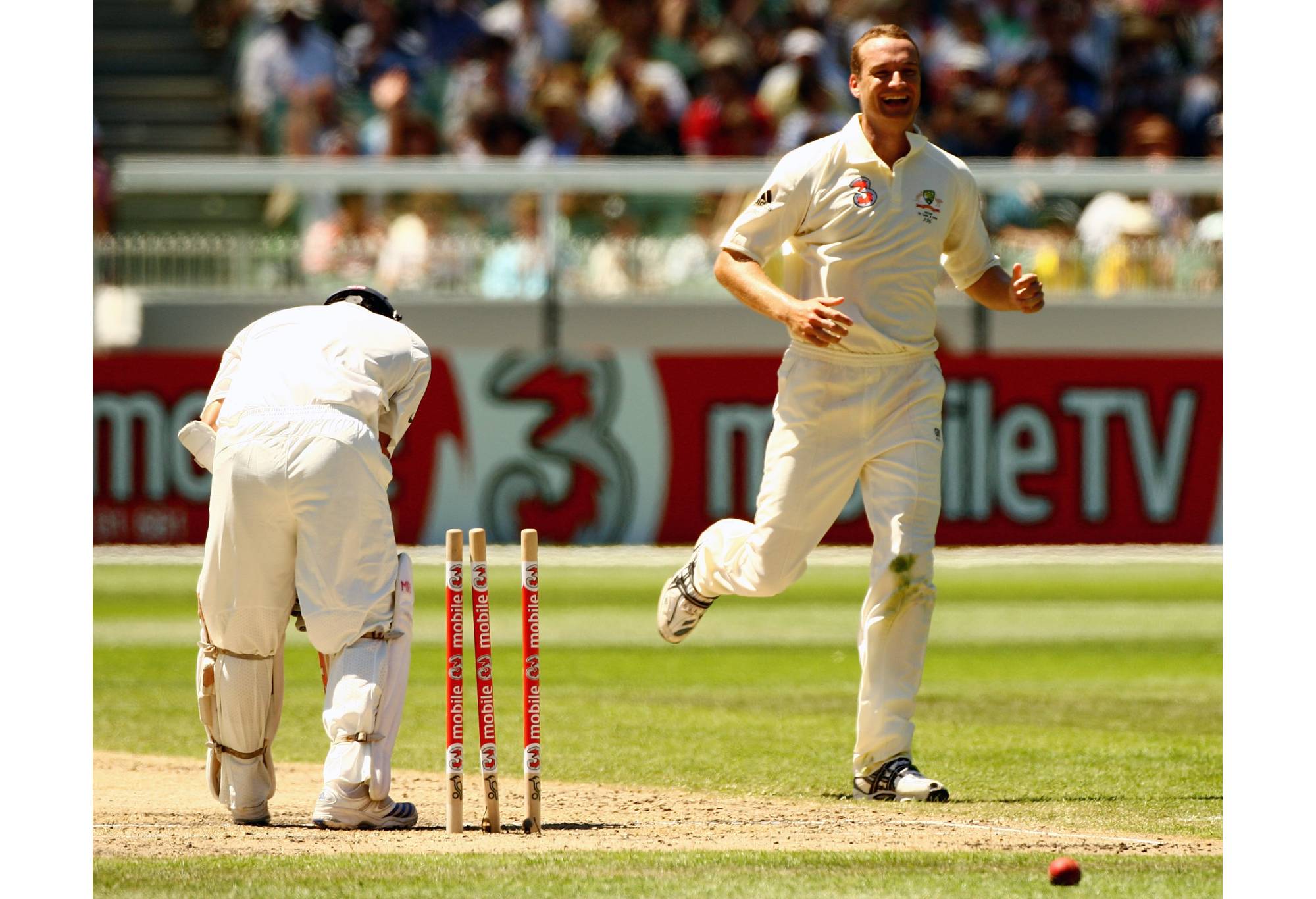It used to be the case that elite sportspeople would start looking for alternative employment when they hit 30.
Some didn’t even make it that far before calling it quits to “get a real job”.
These days, if you want to be an Australian Test cricketer it’s almost a case of you’ve got more hope of making your debut after your 30th birthday than beforehand.
With Pat Cummins and Josh Hazelwood out injured and Australia’s own only teenage debutant since Cummins in 2011 in Sam Konstas relegated to the Sheffield Shield ranks, the selectors are set to bring in two debutants for Friday’s first Ashes Test against England at Optus Stadium.
Jake Weatherald and Brendan Doggett are both 31 and they follow in the footsteps of Beau Webster, Scott Boland, Michael Neser and Adam Voges as players who have been brought into the Test team at a time which used to be considered the twilight of a cricketing career.
As much as they try to deny it the current selection panel of head honcho George Bailey, Tony Dodemaide and coach Andrew MacDonald have been ultra reluctant to change what has largely been a winning formula across all three formats, particularly in the Test team.
Being a veteran means you have the runs on the board – whether you’re a batter or a bowler – at the selection table.
Former Test captains Greg Chappell and Steve Waugh have been outspoken in their belief that the Australian side is desperately in need of regeneration.
Waugh said Bailey has shied away from making tough calls while Chappell has used his Cricinfo column recently to say the selectors have not looked to the future enough and are “going to have a painful regeneration problem”.
“Domestic competitions don’t produce Test-ready players; they only identify those with the skills to make it at the top level, so CA must prioritise giving the next generation as much international cricket at the Australia A level as possible to bridge the gap.”
Chappell who has been part of Test cricket set-ups as a player, captain and coach for the majority of the past 55 years has a point although when he was a national selector for Australia more than a decade ago he was criticised for leaning too heavily into the youth movement with several players given a chance on speculation rather than earning their spot.
The current selection panel’s strategy has kept Australia at the top of the rankings but not enough has been made of the failure to defend their World Test Championship trophy against South Africa last year at Lord’s, which was due in part to an unstable top order.

Pat Cummins and George Bailey (Photo by Steve Bell/Getty Images)
Australia’s “brains trust” waited until the most important match of the two-year cycle to throw an out-of-form Marnus Labuschagne into the opener’s position even though he had zero Test experience at the top of the order.
They lost to a decent South African side but one that wouldn’t hold a candle to the vastly superior Proteas teams of the previous generation.
Because the Aussies have had generational talents like Steve Smith, Cummins, Hazlewood, Mitchell Starc and Nathan Lyon entrenched in the team over the past decade there has been little room for players to get a look in.
Doggett is the first Australian fast bowler to make his debut since Boland on Boxing Day four years ago and apart from Neser, injury-plagued Western Australian speedster Jhye Richardson is the only current seamer in the Sheffield Shield ranks with Test match experience outside the Big Three from his two appearances at home to Sri Lanka in 2019.
If the Australian Test team was a forest, it is one with plenty of old-growth tall timber but no saplings that have been given time to develop.
Cameron Green is the only player in the Test squad in his 20s and that’s after 30-something trio Cummins, Hazlewood and Sean Abbott were ruled out due to injury.
There is some merit in modern-day players making their debut after a decade in the first-class ranks, like Voges, Boland, Ryan Harris, Stuart Clark and the granddaddy of the grandfatherly debutants, Mike Hussey, who piled up 6235 runs at 51.52 from 79 Tests despite waiting until he was 30 for his maiden appearance.

Stuart Clark is all smiles after knocking over the stumps of Sachin Tendulkar in 2007 at Melbourne. (Photo by Mark Dadswell/Getty Images)
They are prime examples of players who knew their game back to front when they were given a spot in the team, making hay while the twilight sun was shining.
Unfortunately the risk with fast bowlers is that they can tail off quickly in their 30s.
Harris, who was 30 when he got his call-up in 2010, was a late bloomer who snared 113 wickets in just 27 Tests at 23.52 but he lasted less than five years in the national squad before knee injuries brought his career to a premature end.
Clark, who was also 30 when he received his first baggy green cap in 2006, stuck around for 3.5 years, bagging 94 wickets in 24 matches at another impressive rate of 23.86, but he was dropped after the 2009 Ashes when it was clear he was no longer capable of penetrating defences at the highest level.
These 30-plus debutants fill a role but it’s only a relative short-term solution.
They cannot be the only replacements when the rare opportunities of Test spots open up.
Whether it’s recalling Konstas when he regains peak form or investing in the likes of Campbell Kellaway, Harry Dixon, Todd Murphy, Callum Vidler and Hugh Weibgen, the Australian team needs fresh blood in the next 12 to 24 months.
Even if Starc, Hazlewood, Smith and Lyon make it through until the next Ashes and World Test Championship final meal deal in 2027, the Australians cannot afford to have them all retire within a year or so of each other with their only replacement options a bunch of newbies untested at the highest level.
>Cricket News

%20(3).jpeg)




0 Comments